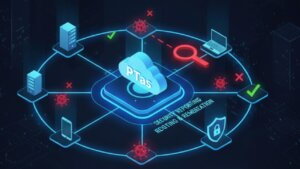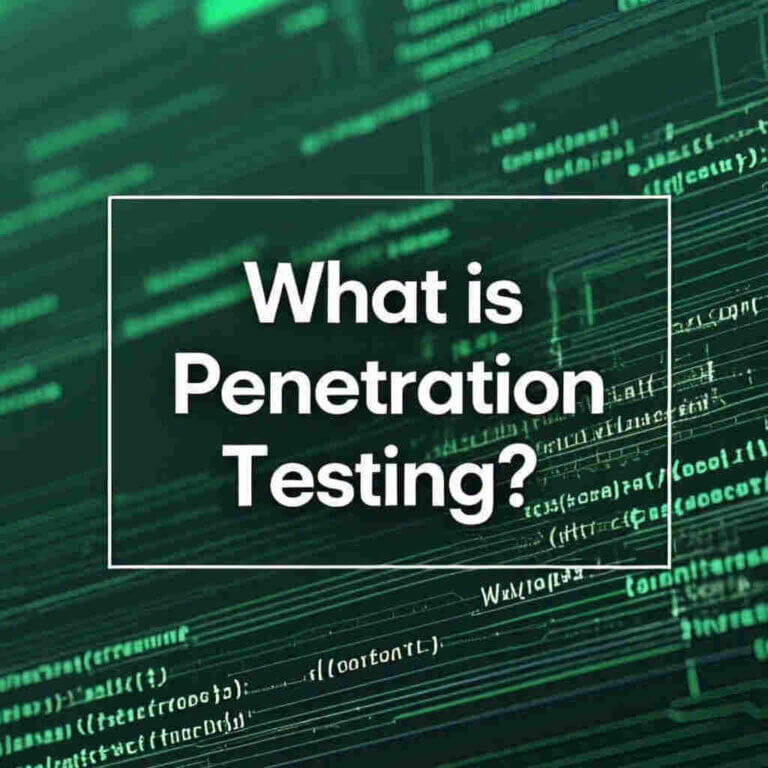The Internet of Things (IoT) has transformed modern living, with smart homes, connected cities, and industrial automation becoming mainstream. However, the increased connectivity has also introduced a broader attack surface, making IoT security a critical concern. IoT penetration testing is essential to identify vulnerabilities in smart devices, ensuring robust security in connected environments.
This blog explores IoT penetration testing methodologies, focusing on smart homes, cities, and industrial IoT (IIoT). Additionally, it delves into communication protocol security, highlighting exploitation techniques and protective measures to safeguard IoT ecosystems.
Table of Contents
IoT Penetration Testing Methodologies
1. Smart Home Security Testing
Smart homes incorporate various IoT devices, including smart locks, thermostats, cameras, and voice assistants. Attackers can exploit vulnerabilities to gain unauthorized access to homes, spy on residents, or disrupt services.
Testing Approach:
Device Enumeration: Identifying and mapping all connected IoT devices within a smart home network.
Firmware Analysis: Extracting and analyzing firmware for vulnerabilities such as hardcoded credentials and outdated components.
Authentication Testing: Evaluating weak password policies, default credentials, and insecure authentication mechanisms.
Network Traffic Analysis: Capturing and analyzing IoT device communication using tools like Wireshark to detect data leakage or unencrypted transmissions.
Remote Access Exploitation: Checking for exposed remote management interfaces (e.g., Telnet, SSH, HTTP APIs) that could allow unauthorized access.
2. IoT Security in Smart Cities
Smart cities rely on IoT for traffic management, surveillance, smart grids, and environmental monitoring. Cyberattacks on these systems can lead to power outages, traffic disruptions, and surveillance breaches.
Testing Approach:
IoT Device Profiling: Identifying the types of smart city IoT devices and their roles within the infrastructure.
Wireless Protocol Analysis: Examining vulnerabilities in LoRaWAN, Zigbee, and Wi-Fi networks that facilitate city-wide IoT communications.
API Security Testing: Evaluating public and private APIs used in smart city applications to identify insecure endpoints.
Physical Security Assessments: Testing physical access controls for critical infrastructure like smart traffic lights or surveillance systems.
SCADA & ICS Security Testing: Assessing supervisory control and data acquisition (SCADA) systems used in city-wide IoT for potential exploits.
3. Industrial IoT (IIoT) Security Testing
Industrial IoT integrates sensors, actuators, and control systems in sectors like manufacturing, healthcare, and transportation. Cyber threats to IIoT can result in operational disruptions, equipment damage, or even safety hazards.
Testing Approach:
Industrial Protocol Security Testing: Evaluating vulnerabilities in Modbus, DNP3, OPC-UA, MQTT, and BACnet protocols used in IIoT environments.
Endpoint Device Exploitation: Testing industrial controllers, PLCs (Programmable Logic Controllers), and sensors for misconfigurations.
Supply Chain Security Audits: Assessing third-party hardware and software components for potential backdoors.
Denial-of-Service (DoS) Attacks: Simulating DoS attacks on industrial networks to test resilience and failover mechanisms.
Cloud & Edge Security Testing: Analyzing cloud-based industrial IoT platforms and edge computing devices for misconfigurations.
Exploiting and Securing Communication Protocols in IoT Ecosystems
IoT ecosystems rely on various communication protocols, each with unique security challenges. Attackers exploit weaknesses in these protocols to intercept, modify, or disrupt device communications.
1. Common IoT Communication Protocols & Exploits
| Protocol | Usage | Security Risks |
|---|---|---|
| MQTT | Smart homes, Industrial IoT | Lack of encryption, authentication issues |
| Zigbee | Smart lighting, home automation | Key leakage, replay attacks |
| LoRaWAN | Smart cities, agriculture | Man-in-the-middle (MitM) attacks |
| Bluetooth | Wearable devices, healthcare | Bluejacking, Blueborne attacks |
| Modbus | Industrial automation | No encryption, unauthenticated commands |
2. IoT Communication Exploitation Techniques
Sniffing & Eavesdropping: Capturing unencrypted IoT traffic using tools like Wireshark and Bettercap.
Man-in-the-Middle (MitM) Attacks: Intercepting and modifying data between IoT devices and controllers.
Replay Attacks: Recording and replaying valid packets to manipulate IoT device behavior.
Unauthorized Remote Access: Exploiting weak authentication mechanisms to gain control over IoT devices.
Firmware Manipulation: Reverse-engineering IoT firmware to discover security flaws and inject malicious payloads.
3. Securing IoT Communications
Enforce Encryption: Use TLS/SSL for MQTT, AES encryption for Zigbee, and VPNs for LoRaWAN.
Implement Strong Authentication: Deploy certificate-based authentication and OAuth 2.0 for IoT APIs.
Regular Firmware Updates: Ensure IoT devices run updated firmware with patched security vulnerabilities.
Network Segmentation: Isolate IoT devices from critical business networks using VLANs and firewalls.
Security Monitoring: Deploy intrusion detection systems (IDS) and anomaly detection for real-time threat monitoring.
Conclusion
With the increasing adoption of IoT in homes, cities, and industries, penetration testing is a necessity to uncover and mitigate vulnerabilities. By applying structured testing methodologies, analyzing communication protocol weaknesses, and implementing robust security controls, organizations can secure their IoT ecosystems against cyber threats.
As IoT technology advances in 2025 and beyond, continuous security assessments and proactive defense strategies will be crucial in safeguarding smart devices and connected infrastructures.
Why Businesses Trust SecureMyOrg for Comprehensive Network Security
At SecureMyOrg, we uncover and fix all possible security vulnerabilities of mobile and web, while providing solutions to mitigate risks. We are trusted by renowned companies like Yahoo, Gojek and Rippling, and with 100% client satisfaction, you’re in safe hands!







Some of the things people reach out to us for –
- Building their cybersecurity program from scratch – setting up cloud security using cost-effective tools, SIEM for alert monitoring, building policies for the company
- Vulnerability Assessment and Penetration Testing ( VAPT ) – We have certified professionals, with certifications like OSCP, CREST – CPSA & CRT, CKA and CKS
- DevSecOps consulting
- Red Teaming activity
- Regular security audits, before product release
- Full time security engineers.
Relevant Posts

AI-Powered Phishing Emails: 7 Ways to Spot and Stop Them Before They Strike
Penetration testing as a service (PTaaS) lets experts simulate real attacks to uncover vulnerabilities before hackers do. This guide explains the process, benefits, and costs, helping businesses strengthen defenses with predictable, ongoing security checks.

Why Regular Penetration Testing is Essential for Modern Companies
Penetration testing as a service (PTaaS) lets experts simulate real attacks to uncover vulnerabilities before hackers do. This guide explains the process, benefits, and costs, helping businesses strengthen defenses with predictable, ongoing security checks.

What Is Penetration Testing as a Service?
Penetration testing as a service (PTaaS) lets experts simulate real attacks to uncover vulnerabilities before hackers do. This guide explains the process, benefits, and costs, helping businesses strengthen defenses with predictable, ongoing security checks.

How To Inspect Encrypted Traffic Without Breaking Privacy
Network administrators face a challenge: securing systems while respecting privacy. This guide explains how to inspect encrypted traffic without breaking privacy using metadata, anomaly detection, and machine learning ensuring visibility, compliance, and trust.

How to Audit Infrastructure as Code (IaC) for Security Vulnerabilities
Discover how to audit Infrastructure as Code (IaC) for security vulnerabilities with this practical guide. Learn to scan IaC files using tools like Checkov, fix issues like exposed resources, and integrate audits into CI/CD pipelines. Protect your cloud systems from misconfigurations and ensure compliance with clear, actionable steps.

DevSecOps Best Practices: Integrating Security Early in Your CI/CD Pipeline
This article provides a practical guide to embedding security into every stage of your CI/CD pipeline. Learn core DevSecOps best practices like SAST, DAST, dependency scanning, secrets management, and compliance automation to catch vulnerabilities early, foster a culture of shared ownership, and build a secure-by-design development process that accelerates release cycles.


